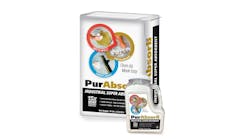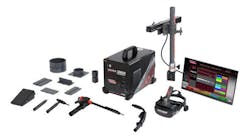While two-post lifts are the most common lift type, they have limitations in terms of capacity and they must be anchored to the floor. Mobile lifts are used in pairs or sets of four, six, or more columns, usually lifting by the tires of the vehicle being serviced.
Mobile column lifts offer the flexibility of mobility, increased capacity, can be used virtually anywhere, and don’t require a bay dedicated to a specific lift type. For some repair services, mobile lifts offer the greatest amount of under-vehicle access of any lift type.
When considering lifts of any type, there are some basic questions you should start with:
- What are the weight ranges of vehicles being lifted and serviced?
- Does the ceiling of the bay have an adequate height to fully raise the tallest vehicles?
- Does the bay have adequate power? Some lifts operate on 220 or 440 AC power while others just need 110 to recharge the batteries of DC operated columns.
In determining the capacity of the columns, it’s important to consider more than just the total weight of the vehicle; also consider the weight of the heavier rear axle. We’ve heard of shops that purchased a set of four columns and the rear columns wouldn’t lift based on the heavier rear of the vehicle being serviced. The solution was a heavier set of rear columns. Ask questions and prepare to be a smart lift buyer.
- How level is the shop floor?
This question is very important given that some lifts require a perfectly level shop floor. Some lifts can’t be used on floors that exceed 6/10ths of a degree of floor slope while others can operate on a 3 degree floor slope. The floor slope may seem inconsequential, but if the floor is pitched 3/4 or 1 degree so that water runs into the oil/water separator, don’t consider lifts that can’t be used on your shop floor.
- Does the lift come standard with retractable wheels?
With retractable wheels, when the lift starts going up weight is removed from the wheels as they retract under load. A simple analogy is to consider whether you’d prefer to do weight lifting exercises while standing on a skateboard or with your feet planted firmly on the ground. Retractable wheels versus stationary wheels make for a safer mobile lift.
Accessory considerations
An engineer at Mack or Freightliner designed the truck to travel down the road on four tires per rear axle. Naturally, it’s safer to lift by all four rear tires instead of just the outer tire. Consider the maximum sidewall rating of the tires. If the rear axle weighs 26,000 lbs and the tires have a maximum load rating of 8,000 lbs, you’re now over-pressurizing the tires.
There is only one nationally recognized safety standard for vehicle lifts: the Automotive Lift Institute (ALI) which can be found at AutoLift.org.
Several lift manufacturers offer longer 22” forks to accommodate dual rear tires. Yet, per AutoLift.org, it’s clear that some who offer 22” forks reduce the capacity from 18,000 to 12,000 lbs, meaning the shop is using the lift against the manufacturer’s stated warnings and ALI’s certification capacities. Some manufacturers wouldn’t be overloading the columns or over-pressurizing the tires.
Most certified lifts offer certified lift options. The most popular option for mobile lifts are front to rear bumper adapters which give the user the ability to use the columns in pairs to engage vehicles by the bumper and leave all tires hanging free for tire, brake, or front end service. The consideration for a mobile lift prospect is: What is the now decreased certified total capacity when using the front to rear adapters?
Again, this option on AutoLift.org shows that while some companies offer the front to rear adapter in a 26,000-lb capacity, others offer this option yet de-rate the columns to barely lift a pickup truck of any size, and some offer this option but using the bumper adapter de-certifies the lift. Research at AutoLift.org will help you make the educated decision. Simply stated, make sure the options you’re considering have an adequate capacity rating to do the job they’re intended to do.
Another popular option is a forklift adapter. Many shops have a forklift, and many choose to service their forklifts in-house. A forklift adapter engages the forklift from between the front and rear tires. AutoLift.org has verified that some mobile column manufacturers do the following:
- Don’t offer a certified forklift adapter.
- Some offer this option in a capacity no higher than being able to service a 4,000- or 5,000-lb capacity forklift (a 5000-lb capacity forklift weighs approximately 8,000 to 9,000 lbs ... think of the counterweight).
- Some manufacturers adequately rate and certify this option to lift and service a 10,000- or 16,000-lb forklift with certified capacities as high as 28,000 lbs.
Again, make sure the brand and available options you’re considering have the stated ALI certified rating to lift and service the equipment you need to repair.
High reach jack stands make mobile lifts more productive. While awaiting parts, shops often lower a vehicle onto the jack stands, move the columns, and lift another vehicle. Make sure the manufacturers you’re considering offer ALI-certified high reach jack stands. If the stands aren’t certified, you’ve just de-certified your new mobile lift and bypassed the only safety standard for lifts.
Mobile lifts are safe, productive pieces of shop equipment to make your shop as efficient as possible. They can help speed vehicles in and out of the shop faster and be more productive. Just be sure to compare lifts when making a purchase, as not all mobile lifts are the same.
Steve Perlstein is the president of Mohawk Lifts. A leader in vehicle lifting technology, Mohawk Lifts (mohawklifts.com) offers environmentally safe above-ground garage lifts, ranging from 6,000- to 240,000-lb capacities as well as many lift accessories for this equipment. All Mohawk Lifts are proudly designed, welded, and manufactured in the U.S.




